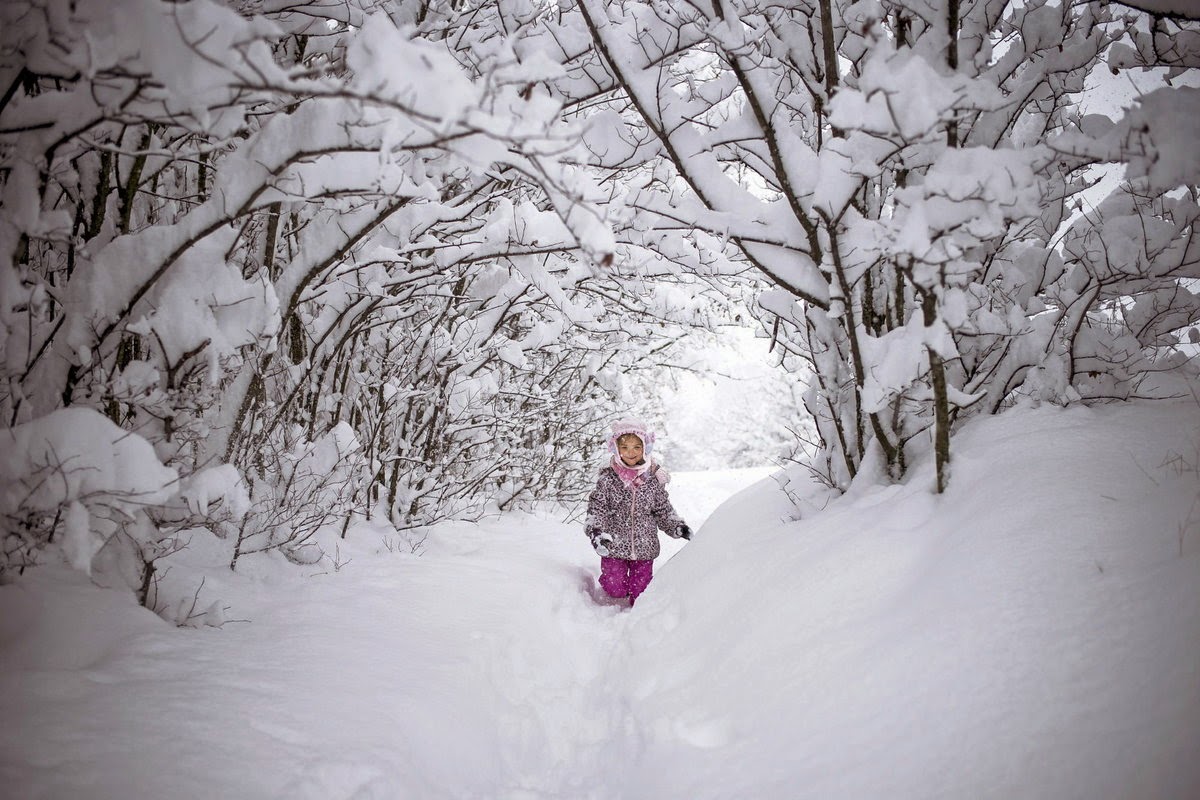Forskning fartøj af Institut Polare franske Marion Dufresne, i fuld aktivitet. (Foto: Ulises Ninnemann)
En varmere klode kan gøre den vigtige dannelse af dybhavet i Nordatlanten
mere ustabil. Forstyrrelserne kan påvirke klima og nedbørsmængder.
Forskere ved Bjerknessenteret
i Bergen er de første, der rapporterer om ustabilt dybhav.
Som konsekvens kan der opstå
pludselige ændringer i klimaet i stedet for mere jævne ændringer over lang tid,
ifølge forskerne.
Der kan for eksempel opstå
mere tørke i nogle regioner og mere nedbør andre steder.
Fremtidens klima ligner tilstandene for 116-128.000 år
siden
I den seneste udgave af tidsskriftet Science viser forskerne, at
cirkulationen af dybvand i Nordatlanten, som er en vigtig del af jordens
klimasystem, har ændret sig betragteligt i perioder på blot nogle hundrede år i
forrige mellemistid.
Opdagelserne skaber bekymring,
fordi klimamodeller i dag viser, at vi er på vej mod en varmere klode, hvor
temperaturen kan stige med alt fra to til seks grader, afhængigt af mængden af
CO2-udslip.
For 116-128.000 år siden var
Nordatlanten nogle grader varmere end i dag, mens havet stod en del meter
højere.
Ved at analysere
sedimentkerner 20-30 meter nede i havbunden syd for Grønland kan forskerne se,
at der opstod forstyrrelser i dybvandsdannelsen, da Nordatlanten var varmere
end i dag, og ismasser trak sig tilbage.
Da ændringerne fandt sted for
over 100.000 år siden, var klimaet i Nordatlanten ganske lig det, som vi
bevæger os mod nu.
Varmere klima og ferskere vand reducerer
dybvandsdannelsen
Klimaforsker Eirik Vinje
Galaasen ved Bjerknessenteret i Bergen mener, det er bekymrende, at en så
vigtig del af jordens klimasystem er mindre stabilt, end forskerne troede.
»Særligt fordi vi må forvente
stigende temperaturer og dermed, at Nordatlanten bliver varmere og ferskere,«
siger han til forskning.no.
Eirik Vinje Galaasen er førsteforfatter på det nye forskningsprojekt.
»Varmere klima og tilførsel af
ferskvand kan reducere dybvandsdannelsen, og dermed går vi mod en tilstand, som
vi beskriver i den varme periode under sidste mellemistid. Dengang ændrede
cirkulationsmønsteret sig betragteligt gentagende gange,« fortsætter han.
Risiko for hurtige klimaændringer
I den nyeste rapport fra FN’s
klimapanel er havcirkulationen i Nordatlanten blevet vurderet til at være
ganske stabil med blot langsomme og gradvise svækkelser, mens de nye opdagelser
fra Bergen peger i den modsatte retning.
Det er altså ikke
usandsynligt, at vi må forberede os på hurtigere forandringer i klimaet end
tidligere antaget.
Fire forskere fra
Bjerknessenteret står bag arbejdet. Foruden førsteforfatter Eirik Vinje
Galaasen består gruppen af Ulysses S. Ninnemann, Nil Irvali og Helga (Kikki) F.
Kleiven.
Forskerne fra Bergen har også
haft fagfolk fra England, USA og Frankrig inde over.
Derfor er cirkulationen vigtig
Cirkulationen i Nordatlanten
er vigtig for klimaet både regionalt og globalt.
Dette skyldes, at en stadig og
stabil dannelse af dybvand er nødvendig for, at havet for eksempel skal kunne
opfange store mængder af karbon, altså fjerne både naturligt dannet CO2 og de
stigende mængder, vi mennesker forurener med.
Hvis dannelsen af dybvand
ændrer sig, kan havets CO2-optag fra atmosfæren blive reduceret. Det kan også
give mindre indstrømning af varmt overfladevand til vores områder i nord og
påvirke luftstrømme i atmosfæren.
»En konsekvens af dette kan
for eksempel være mere tørke i dele af Nordafrika. Det kan også få en globalt
opvarmende effekt af mere CO2, som ellers ville blive transporteret ned i
dybhavet,« oplyser Eirik Vinje Galaasen.
Geologiske ændringer kan være tegn på mere ustabile
havstrømme
I de nordlige områder kan vi derimod opleve en svagt nedkølende tendens
frem mod århundredskiftet, som kan reducere temperaturøgningerne en del
her.
»Det eneste, vi kan gøre for
at modvirke, at Nordatlanten bliver mere ustabil, er at komme med tiltag, som
forhindrer, at temperaturerne stiger væsentligt,« fortsætter klimaforskeren.
Ifølge Eirik Vinje Galaasen,
ser det ud til, at der findes en tærskel, et såkaldt vippepunkt for, hvornår
havstrømmene bliver mere ustabile, og ting begynder at ske.
»Vi ved ikke med sikkerhed,
hvor dette vippepunkt er, men vores opdagelser viser, at der hurtigt skete
store geologiske ændringer, da havet blev varmere og ferskere før i tiden,«
siger Eirik Vinje Galaasen.
Forskerne analyserede sedimentkerner syd for Grønland
Det, Eirik Vinje Galaasen og
hans kollegaer har gjort i deres undersøgelse, er med en simpel forklaring at
analysere sedimentkerner på 30-40 meters længde.
Disse har Eirik operationen
hentet op fra bunden af Nordatlanten lige syd for Grønland med et
boreinstrument.
Forskerne har målt
sammensætningen af karbonisotoper i skaller fra dyr, som levede på havbunden
syd for Grønland for 116-128.000 år siden. De har desuden set på, hvilke arter
der levede i overfladevandet.
Livet dengang fortæller
forskerne om ændringer i saltindhold og temperatur, som er vigtigt for at sige
noget om vandmassernes stabilitet.
Lag for lag kan forskerne
dermed analysere sig frem til, hvor meget dybvand, der er dannet og har passeret.
De studerer centimetertynde udsnit af sedimenterne i mikroskop. Vi kan kalde
det en tidsrejse.












